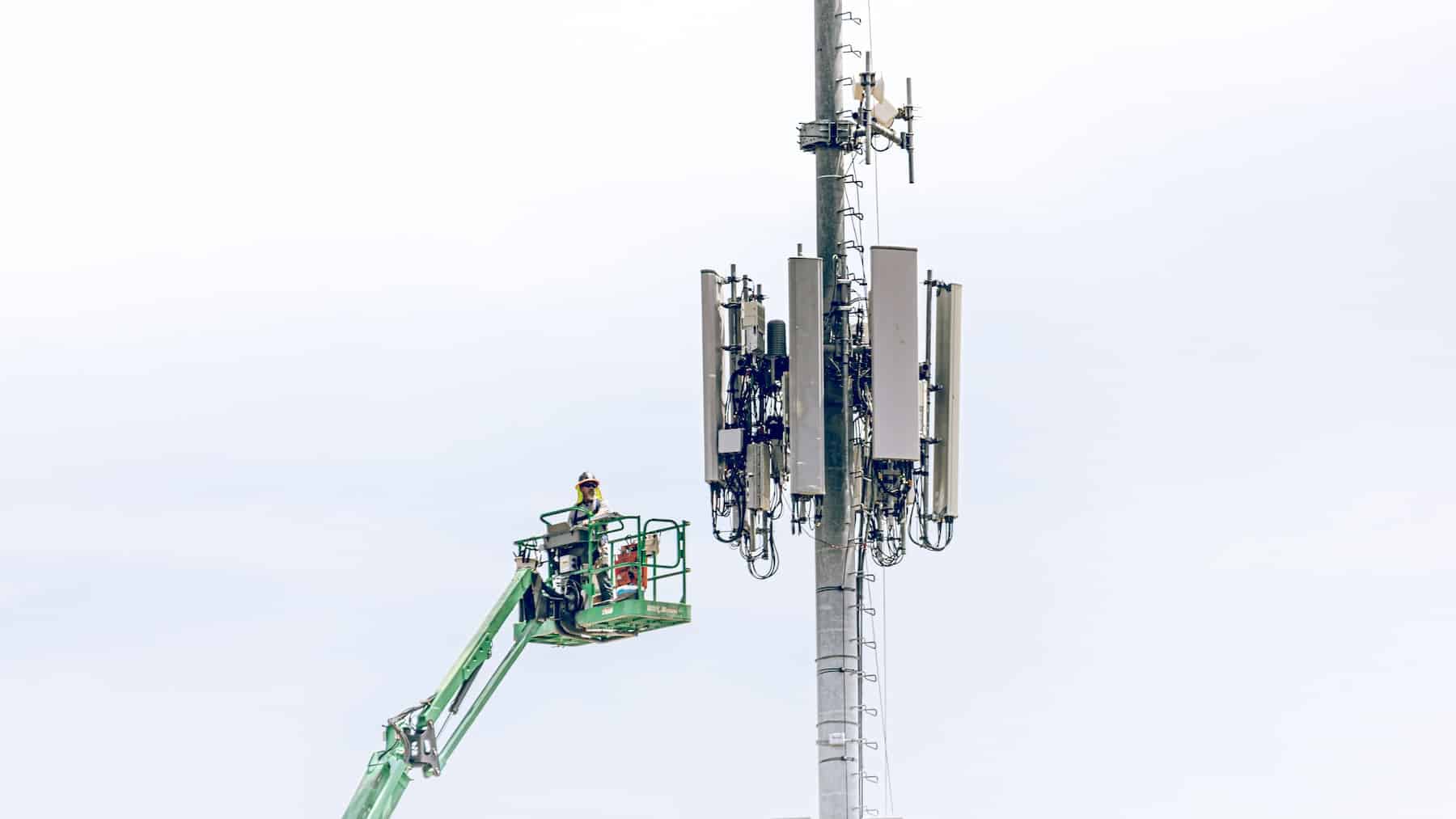WiMAX (Worldwide Interoperability for Microwave Access) is a telecommunications technology that allows for wireless broadband Internet access over long-range networks. It is a solution designed to provide high-speed connectivity in areas where other technologies, like cable or fiber optics, may not be available or are difficult to implement. WiMAX is based on the IEEE 802.16 standard and is known for its ability to cover large geographical areas, both in urban and rural zones.
How does WiMAX work?
WiMAX uses microwave data transmission technology to send Internet signals from base stations to receiving devices, such as computers, routers, or mobile phones, equipped with a WiMAX receiver. Communication is done wirelessly through radio frequencies, allowing for a cable-free connection.
The operation of WiMAX can be divided into two main components:
1. Base station: The base station is the access point that broadcasts the WiMAX signal over a wide geographical area. These stations are similar to mobile phone towers and can cover from several kilometers in urban areas to tens of kilometers in rural zones.
2. Receiving devices: Devices like routers, antennas, or WiMAX modems receive the signal transmitted by the base station and convert it into a broadband connection for end users. These devices can be installed in homes, businesses, or even on mobile devices, depending on the type of WiMAX network.
WiMAX allows for both fixed and mobile connections:
– Fixed WiMAX: Allows for connecting non-moving devices like homes or offices, providing an alternative to cable broadband connections (DSL, fiber optics, etc.). In this case, receiver antennas are usually placed in a fixed location.
– Mobile WiMAX: Offers connectivity to moving devices like mobile phones or laptops, similar to how 4G networks operate. This allows users to connect to the Internet while on the move, though this variant has been more challenging to implement compared to traditional mobile technologies.
Main features of WiMAX
1. Long-range coverage: WiMAX can provide coverage within a radius of up to 50 km in its fixed version and up to 15 km in its mobile version, though actual distances may vary depending on geographical and climatic conditions. This makes it a viable option for rural areas or areas with limited infrastructure.
2. Transmission speed: WiMAX offers data transmission speeds ranging from 1 Mbps to 70 Mbps, depending on network configuration and the distance between the user and the base station. Though maximum speeds are theoretical, the technology allows for a satisfactory browsing experience for most Internet applications like video streaming, video calls, and file downloads.
3. Point-to-multipoint connection: WiMAX uses a point-to-multipoint network architecture, meaning a single base station can provide connection to multiple receiving devices simultaneously. This allows a large number of users to access the Internet from a single WiMAX tower, reducing the need for additional infrastructure.
4. Quality of Service (QoS): WiMAX is designed with capabilities to manage quality of service, ensuring a more stable and efficient connection, especially for high-performance applications like Voice over IP (VoIP) or real-time video streaming. The technology prioritizes different types of data traffic, ensuring that critical services receive the necessary bandwidth.
Advantages of WiMAX
– Wide coverage: One of the biggest advantages of WiMAX is its ability to cover large geographical areas, making it an ideal option for bringing Internet to rural or underdeveloped areas where wired technologies are not feasible.
– High-speed wireless access: Offers broadband speeds without the need for complex physical infrastructure like fiber optic cables or telephone lines.
– Flexibility: WiMAX allows for both fixed and mobile access, making it useful in a variety of environments, from cities to rural areas, and even for providing access to users on the move.
– Implementation costs: Since it doesn’t require extensive physical infrastructure like laying cables, WiMAX may be more cost-effective to implement in areas where deploying fiber or cables would be expensive or impractical.
Disadvantages of WiMAX
– Interference and environmental conditions: WiMAX signals can be affected by physical obstacles like buildings or mountains, as well as adverse weather conditions, which can reduce connection quality.
– Latency: While suitable for most applications, WiMAX may have higher latency compared to other broadband technologies like fiber optics, which could affect time-sensitive services like online gaming.
– Competition with other technologies: WiMAX has faced stiff competition from other Internet access technologies like 4G LTE and fiber optic networks, which offer higher speeds and lower latency in many cases. This has led to a decrease in WiMAX adoption in favor of newer technologies.
WiMAX vs other technologies
WiMAX has been compared to other technologies like Wi-Fi and 4G LTE:
– WiMAX vs Wi-Fi: Wi-Fi is a short-range technology, typically used for local networks (LAN), while WiMAX is designed to cover much greater distances. Wi-Fi is common in home and commercial environments, while WiMAX is more used for large area coverage, including rural zones.
– WiMAX vs 4G LTE: While WiMAX and 4G LTE offer similar mobile Internet access services, LTE has surpassed WiMAX in terms of speed, performance, and global adoption. Most mobile operators have opted for LTE due to its compatibility with existing cellular network technologies.
Conclusion
WiMAX is a technology that offers Internet access solutions in areas where traditional options are limited. Though overshadowed by newer technologies, it remains a viable option in certain circumstances, especially in rural or remote areas where broadband access is hard to implement. With relatively simple infrastructure and broad coverage, WiMAX continues to be a valuable alternative in the global telecommunications ecosystem.

